Budworms
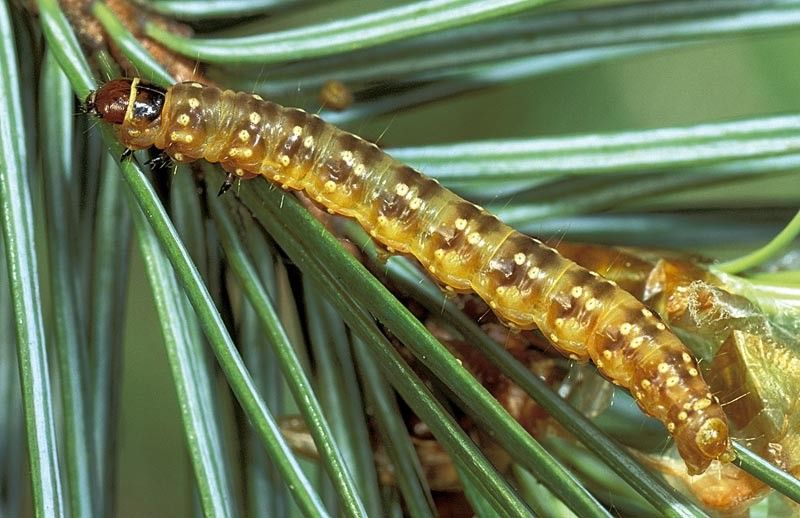
Courtesy Natural Resources Canada.
A western spruce budworm caterpillar.
A notice went out in our subdivision on Yale Creek in Island Park that it was western spruce budworm season. This year, the subdivision had arranged for a drone to spray the trees on properties for a very low fee. I wasn’t sure if we had a problem on our property, but others were excited about the opportunity so we bit too, wanting to be safe, not sorry. Several days later, another notice told us that the drone had crashed and was a total wreck. No more spraying for this tiny forest pest.
I was left wondering if I had lost an opportunity to protect my beloved Douglas firs or had dodged a bullet. I knew little about the western spruce budworm, what damage would look like, or how it was controlled. Would the cure be worse than the disease?
I decided to learn a little more on the subject. Even though they are a native species, western spruce budworms are considered the most destructive forest insect in the West. When an infestation occurs, tens of thousands of acres can be affected. It usually takes up to four years, but a prolonged infestation can kill trees by removing so many needles the tree literally starves to death (needles are the source of their food energy). Trees in poor health such as drought stressed trees, are most susceptible and trees under attack by the budworm are weakened and vulnerable to disease and other insect assaults.
The caterpillars of the western spruce budworm are small, one half to one inch long. The are brown to rusty red, but the real identifier is the pairs of white dots along the body. The adult is a small moth that is usually mottled gray or brown (think camouflage).
As the name implies, the western spruce budworm attacks Engelmann and blue spruces. However, they also love to chew on Douglas fir, grand fir, and even larches. If you ask AI if they attack pine trees, the answer will be no, but several western state forest departments say that several pines, lodgepoles included, may be hosts on occasion.
It is the larval or caterpillar stage of the western spruce budworm that does the damage. The mature female moth lays her eggs on the needles of a tree, usually high up in the crown. When the eggs hatch, the caterpillars begin feeding on the newly growing needles. They will often encase themselves by spinning silk around several needles, pulling them together. This is one of the sure signs that you have a budworm problem, but it is difficult to see because these bundles are usually very high in the tree.
Instead of looking for signs of the insects themselves, stand back and look at the tops of the trees from a distance. The tops of infested trees will look sparse or thin, almost like they were wind-whipped. Die-back may occur on the branch tips. Eventually the tops of the trees will go brown or red.
Looking out at my trees, I see little to no damage in the tops of my Douglas firs. However, lodgepole pines on my lot and neighboring lots have tips of branches, even lower down, that are turning brown. Since western spruce budworm rarely impacts pine species, I suspected that there might be something else at work. As it turns out, there is a closely related species, the western pine budworm, that just loves to chew on pine trees. It is possible that these little critters are impacting my pines, but on a larger scale, they rarely create an infestation like their cousins.
What can we do about spruce (or pine) budworms? Is there an effective control? Is the cure harder on the environment than the infestation? More on that next time.
Help Idaho Wildlife
When we traveled across the state in October 2017, we visited most of the Idaho Department of Fish and Game wildlife management areas. Most of the vehicles we saw using the wildlife management areas did not have wildlife plates. Buying wildlife plates is a great way for non-hunters and hunters alike to support wildlife-based recreation like birding.
C'mon folks, let's help Idaho's wildlife by proudly buying and displaying a wildlife license plate on each of our vehicles!
See below for information on Idaho plates. Most states have wildlife plates so if you live outside Idaho, check with your state's wildlife department or vehicle licensing division for availability of state wildlife plates where you live.
And tell them that you heard about it from Nature-track.com!
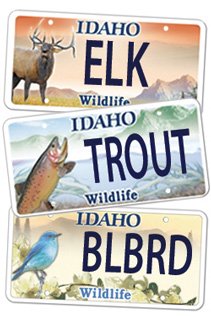
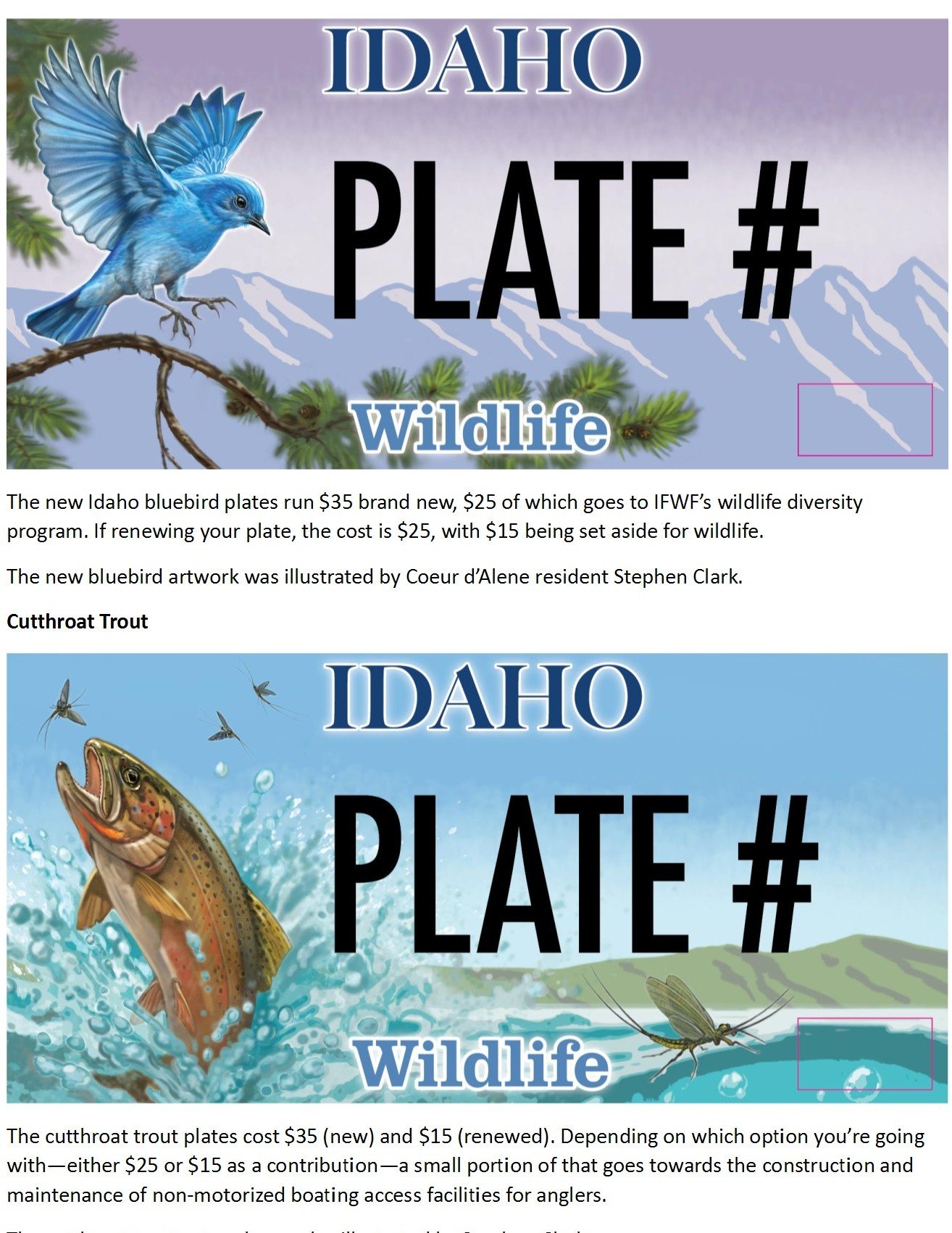
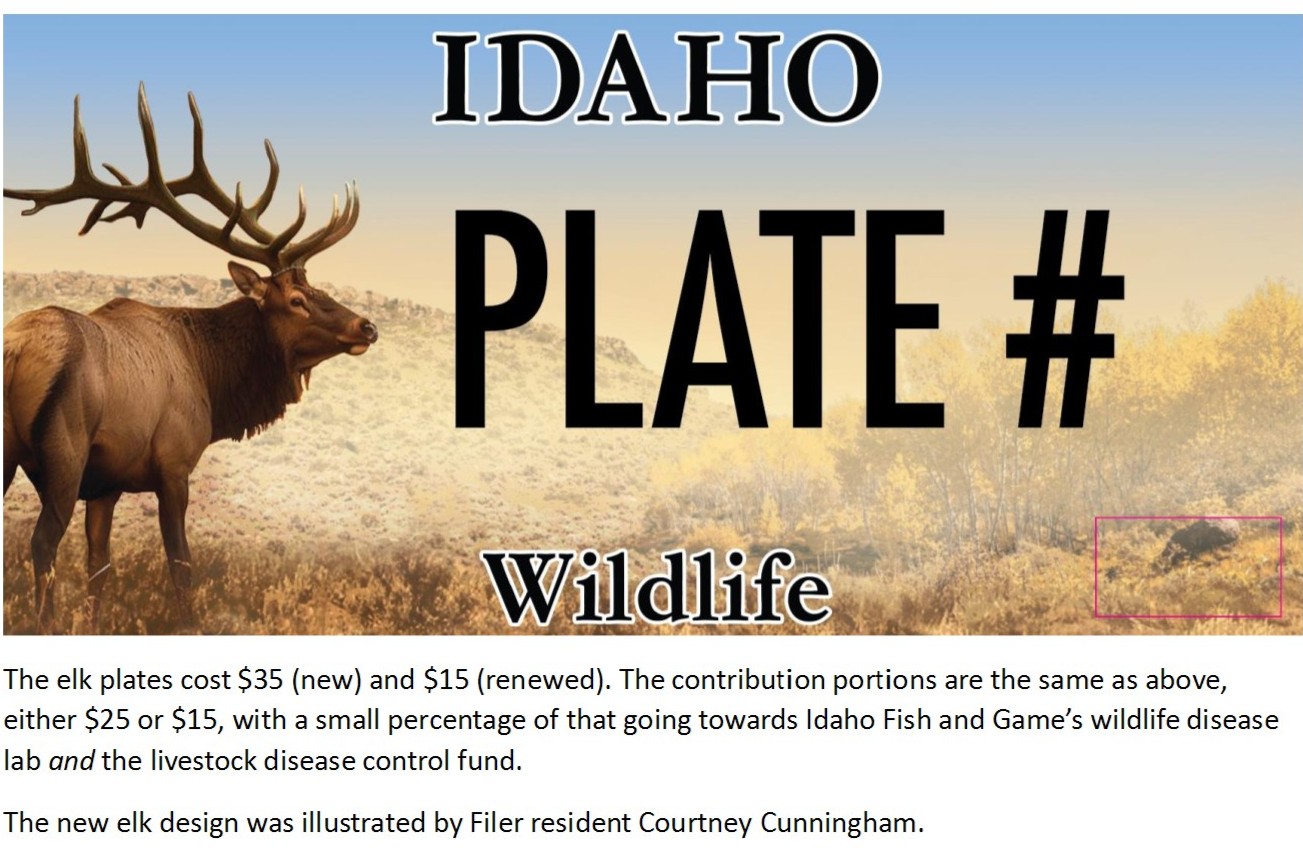
Wildlife License Plates
Great news! as of 2024, there are three NEW designs for license plates. They still are bluebird, cutthroat trout and elk, but they are beautiful.
Idaho Wildlife license plates provide essential funding that benefits the great diversity of native plants and wildlife that are not hunted, fished or trapped—over 10,000 species or 98% of Idaho’s species diversity. Game species that share the same habitats (such as elk, deer, antelope, sage-grouse, salmon, trout) also benefit from these specialty plates.
No state tax dollars are provided for wildlife diversity, conservation education and recreation programs. Neither are any revenues from the sale of hunting or fishing licenses spent on nongame species. Instead, these species depend on direct donations, federal grants, fundraising initiatives—and the Idaho Wildlife license plates.
Both my vehicles have Bluebird Plates. I prefer the bluebird because the nongame program gets 70 percent of the money from bluebird plates, but only 60 percent of the money from elk and trout plates - 10 percent of the money from elk plates supports wildlife disease monitoring and testing programs (to benefit the livestock industry) and 10 percent from cutthroat plates supports non-motorized boat access.
Incidentally, in 2014, the Idaho Legislature denied the Department of Fish and Game the ability to add new plates or even to change the name of the elk and cutthroat plates (very specific) to wildlife and fish plates, a move that would have allowed for changing images occasionally and generating more revenue. It would seem that they believe that we Idahoans don't want a well funded wildlife program.
I think it is time we let the Legislature know that Idahoan support wildlife funding and that we would like to see these generic plates come to fruition.
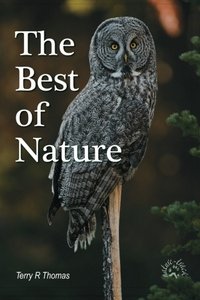
"WOW. What a phenomenal piece you wrote. You are amazing." Jennifer Jackson
That is embarrassing, but actually a fairly typical response to my nature essays. Since The Best of Nature is created from the very best of 16 years of these nature essays published weekly in the Idaho Falls Post Register (online readership 70,000), it is a fine read. It covers a wide variety of topics including humorous glimpses of nature, philosophy, natural history, and conservation. Readers praise the style, breadth of subject matter and my ability to communicate complex and emotional topics in a relaxed and understandable manner.
Everyone can find something to love in this book. From teenagers to octogenarians, from the coffee shop to the school room, these nature essays are widely read and enjoyed.
Some of the essays here are my personal favorites, others seemed to strike a chord with readers. Most have an important message or lesson that will resonate with you. They are written with a goal to simultaneously entertain and educate about the wonderful workings of nature. Some will make you laugh out loud and others will bring a tear to the eye and warm your heart.
Readers Write:
"You hit a home run with your article on, Big Questions in Nature. It should be required reading for everyone who has lost touch with nature...great job!" Joe Chapman
"We enjoyed your column, Bloom Where Planted. Some of the best writing yet. The Post Register is fortunate to have your weekly columns." Lou Griffin.
To read more and to order a copy, click here or get the Kindle version
Copies are also available at:
Post Register
Island Park Builders Supply (upstairs)
Barnes and Noble in Idaho Falls
Harriman State Park, Island Park
Museum of Idaho
Valley Books, Jackson Wyoming
Avocet Corner Bookstore, Bear River National Wildlife Refuge, Brigham City, Utah
Craters of the Moon National Monument Bookstore, Arco, Idaho